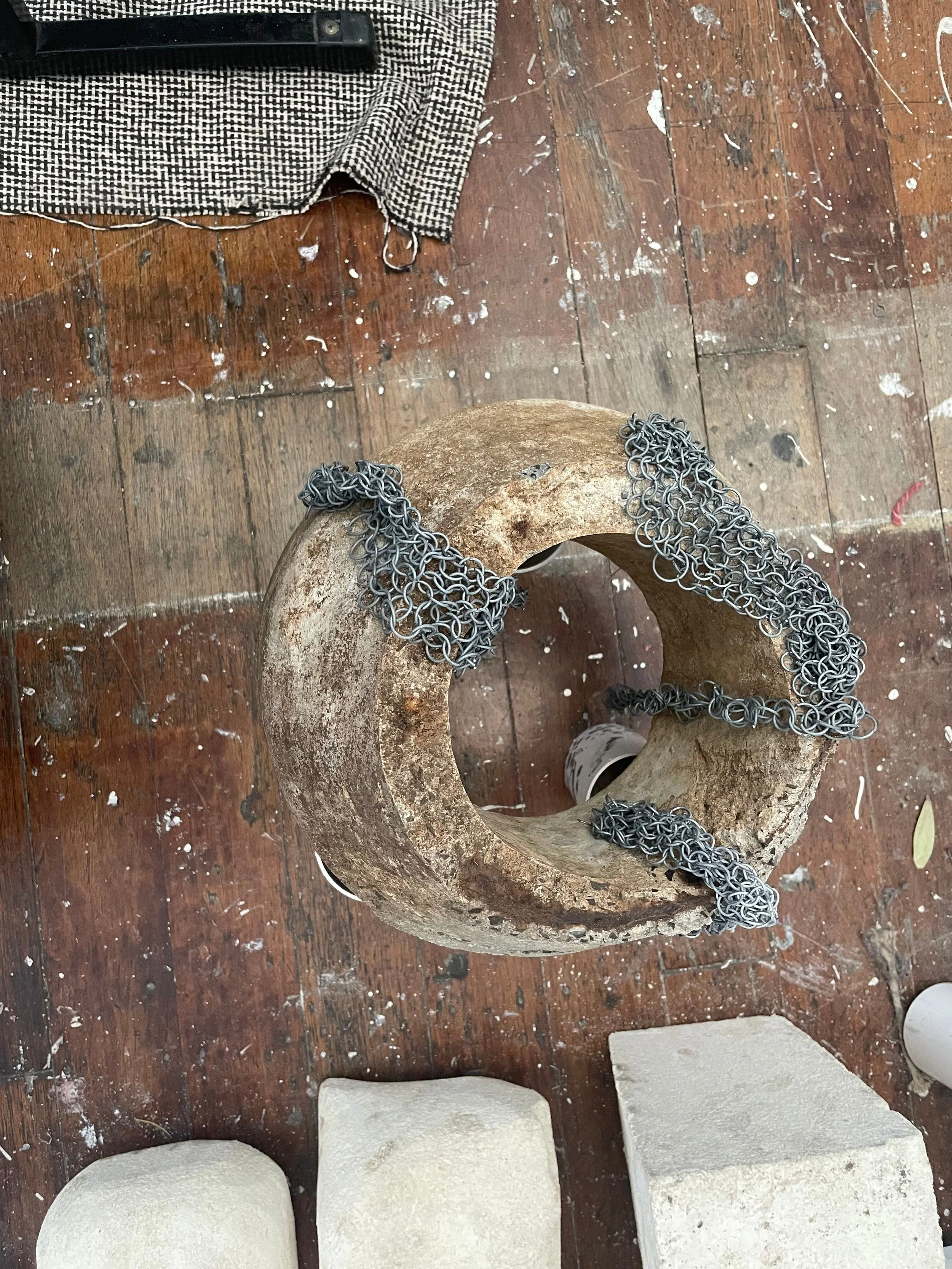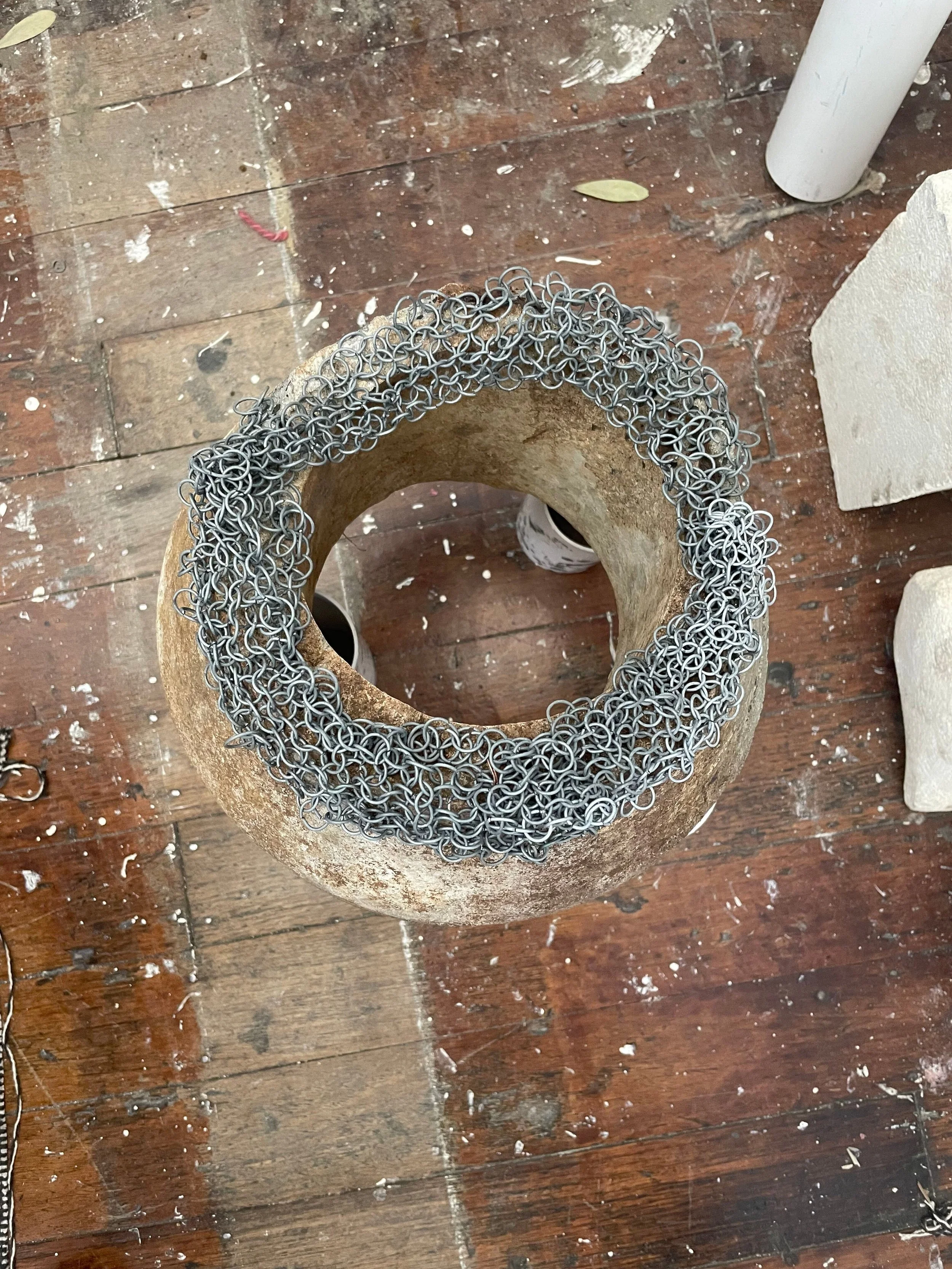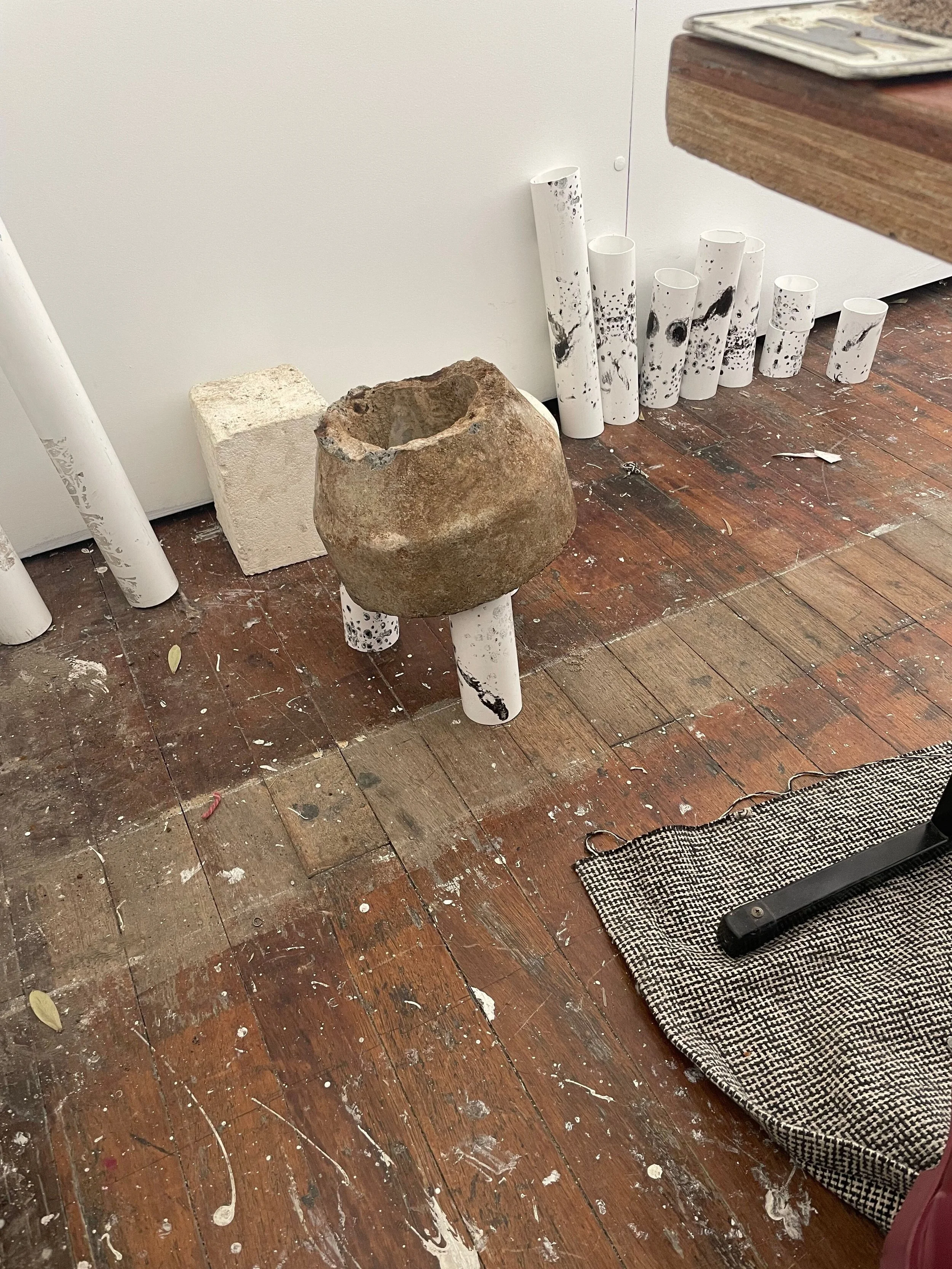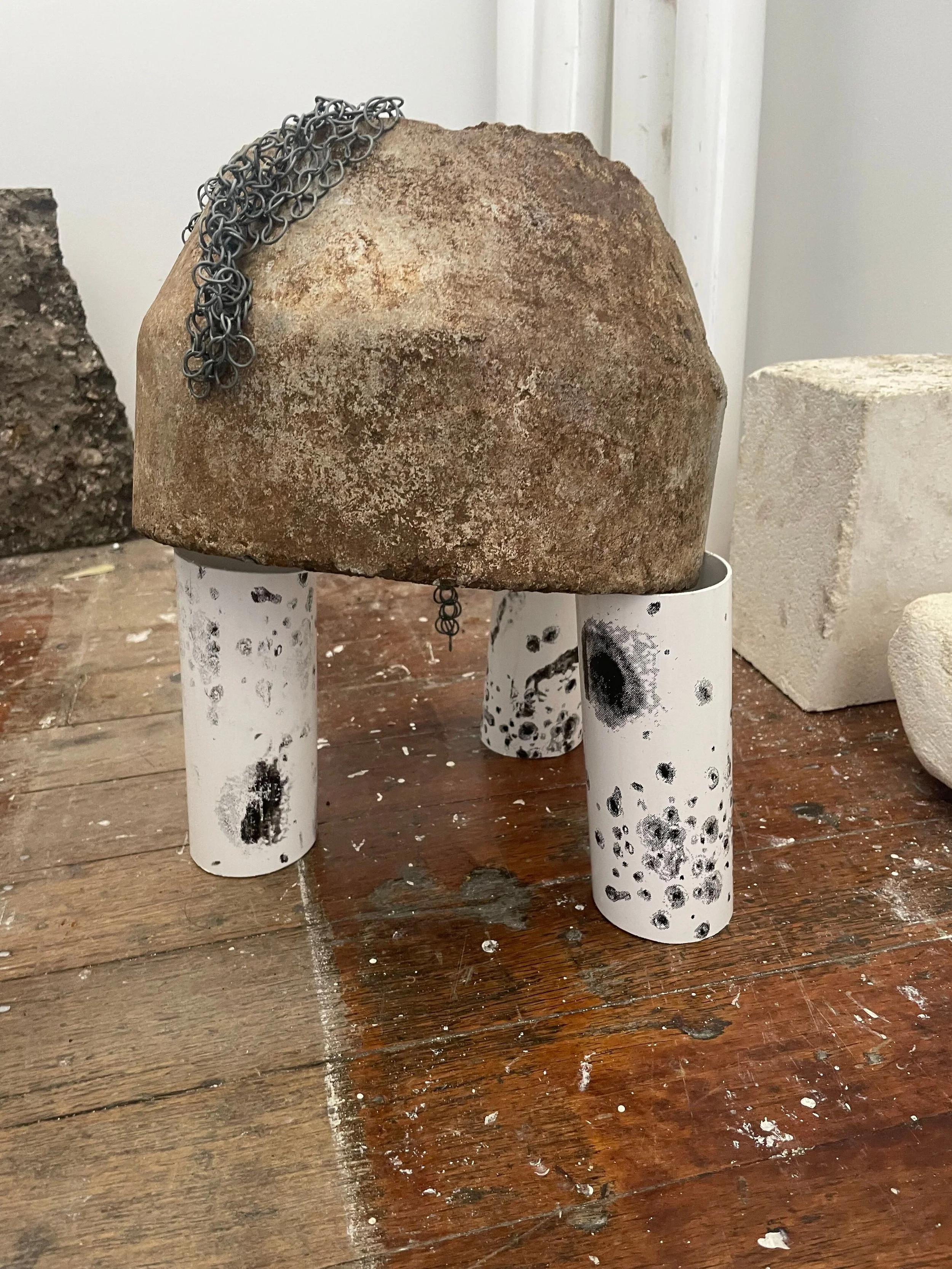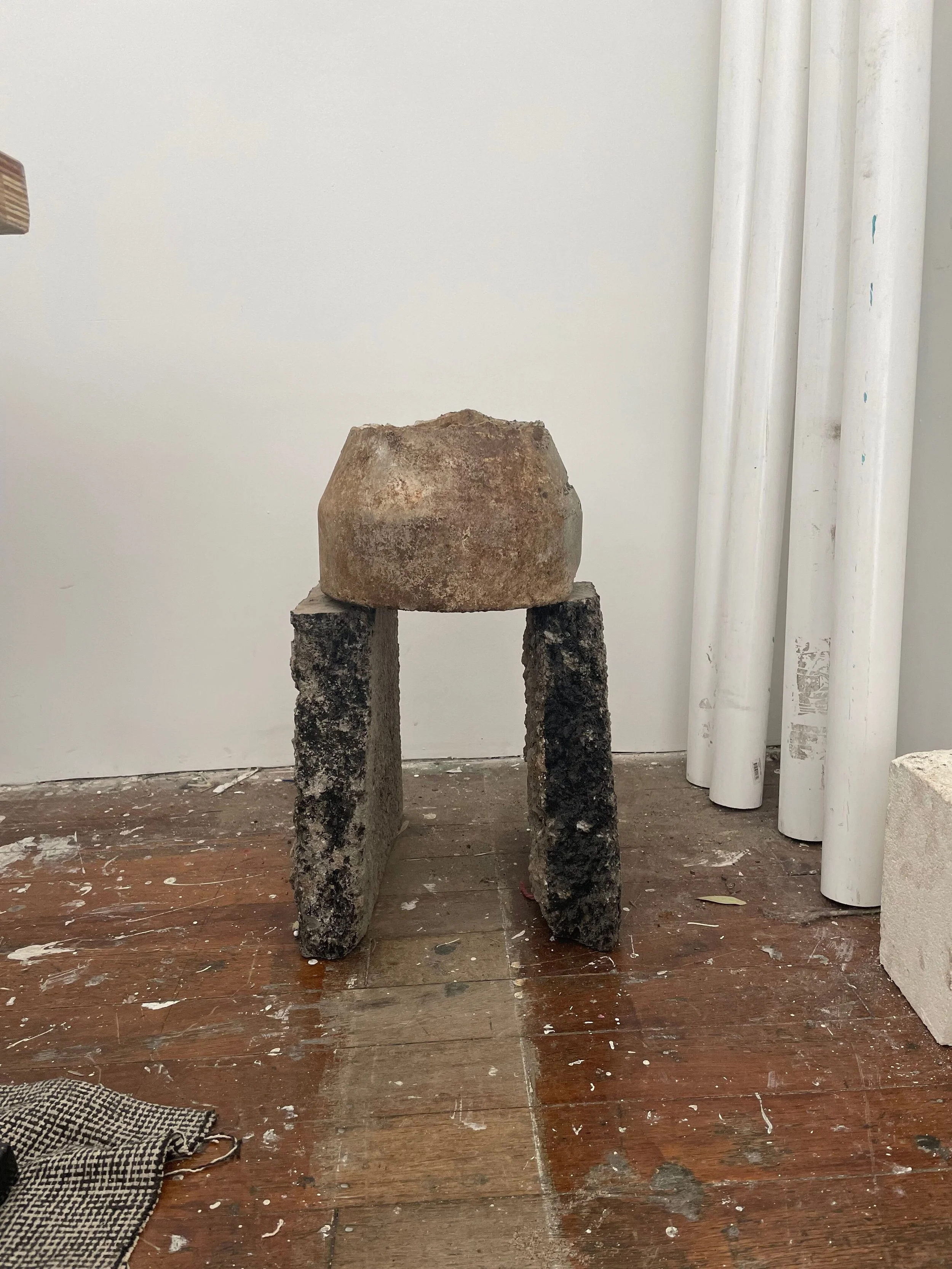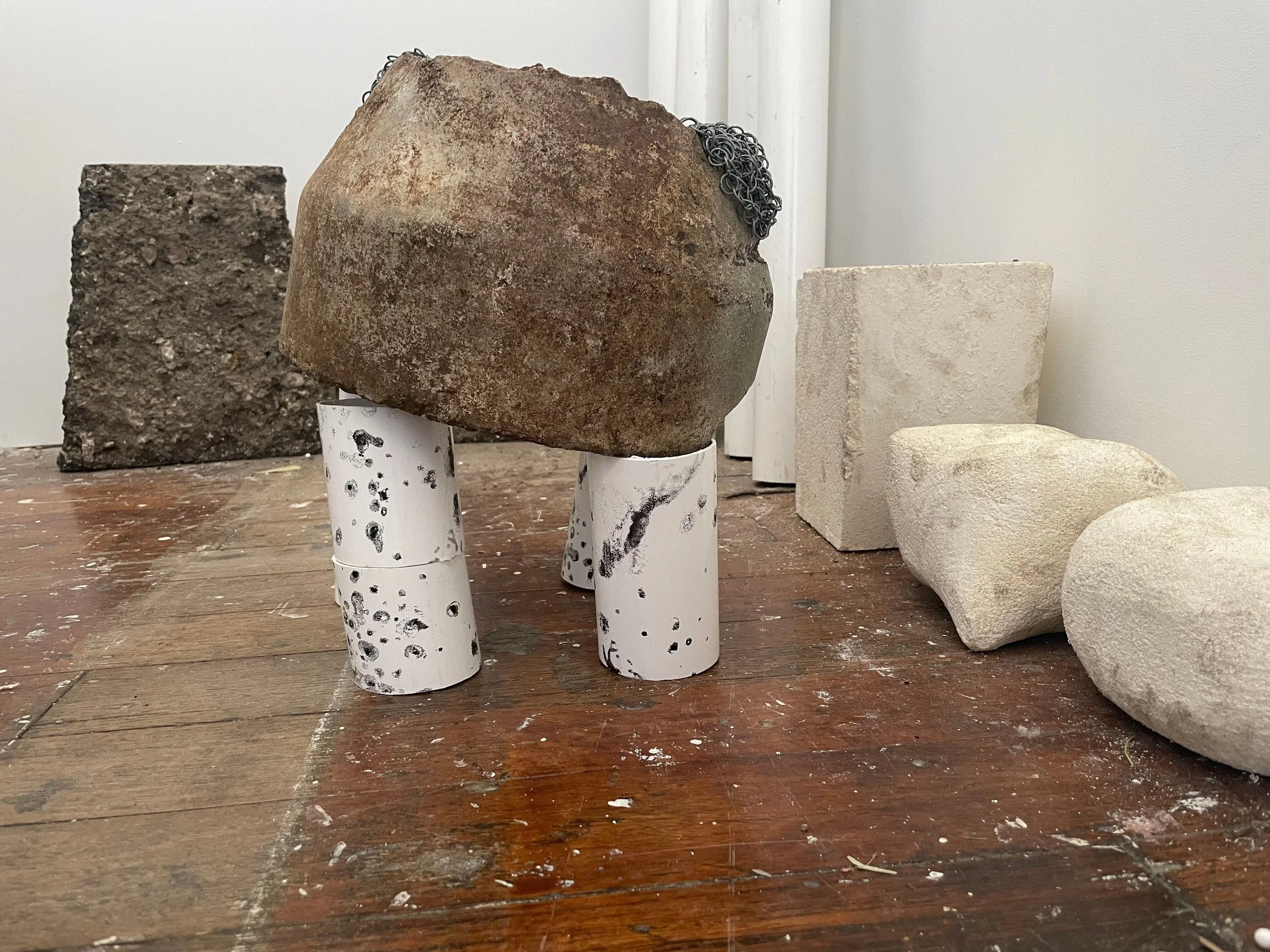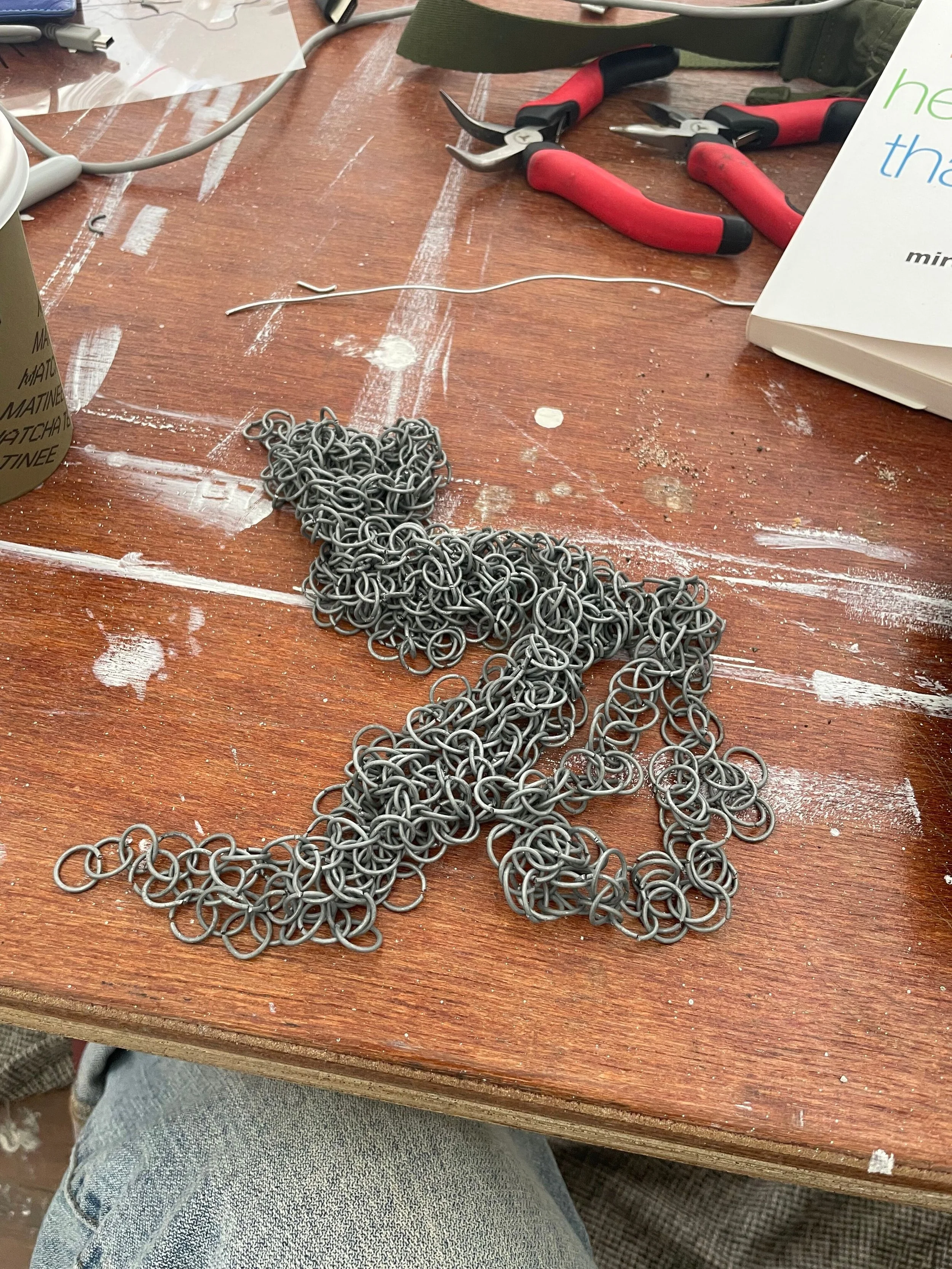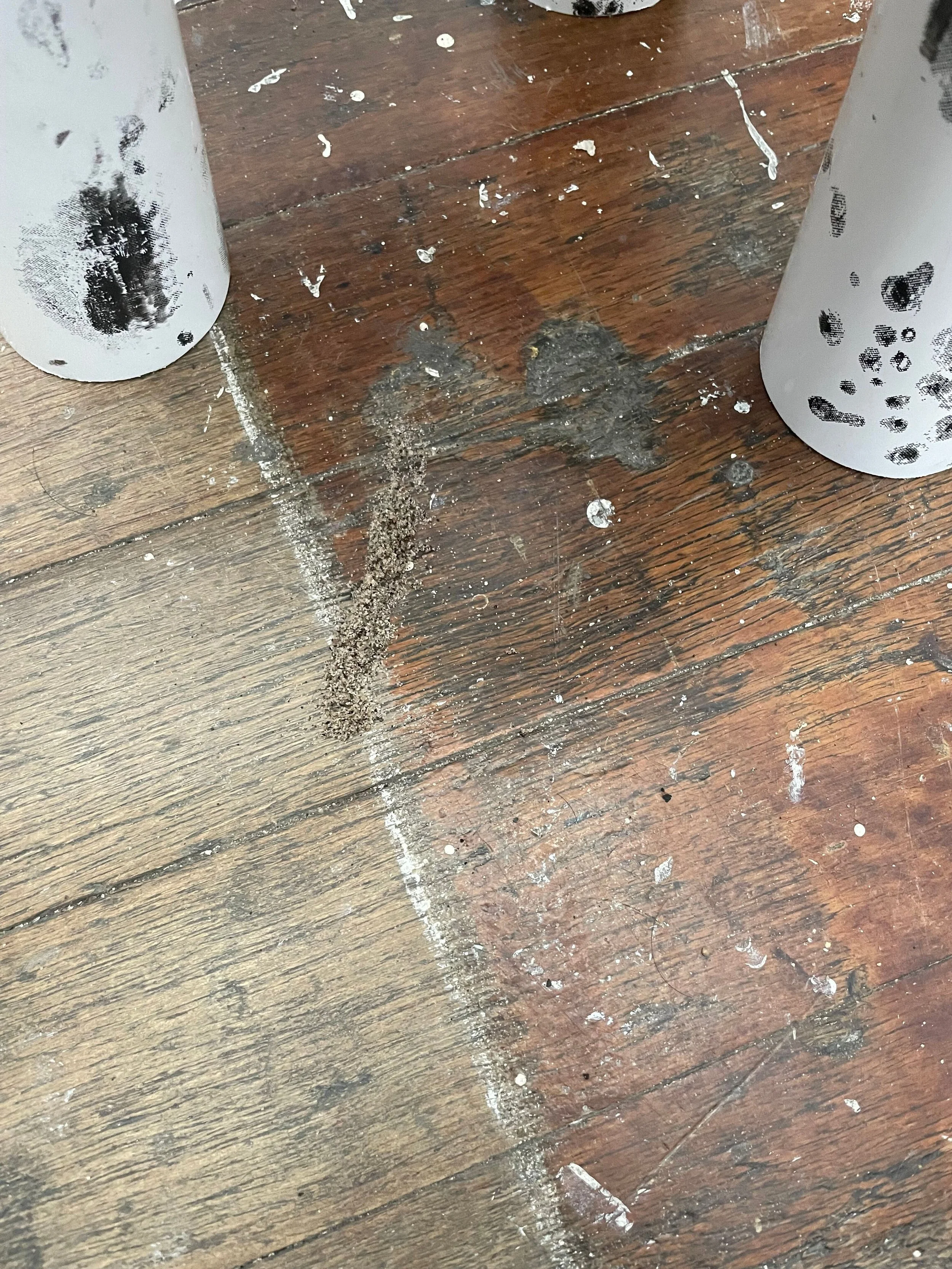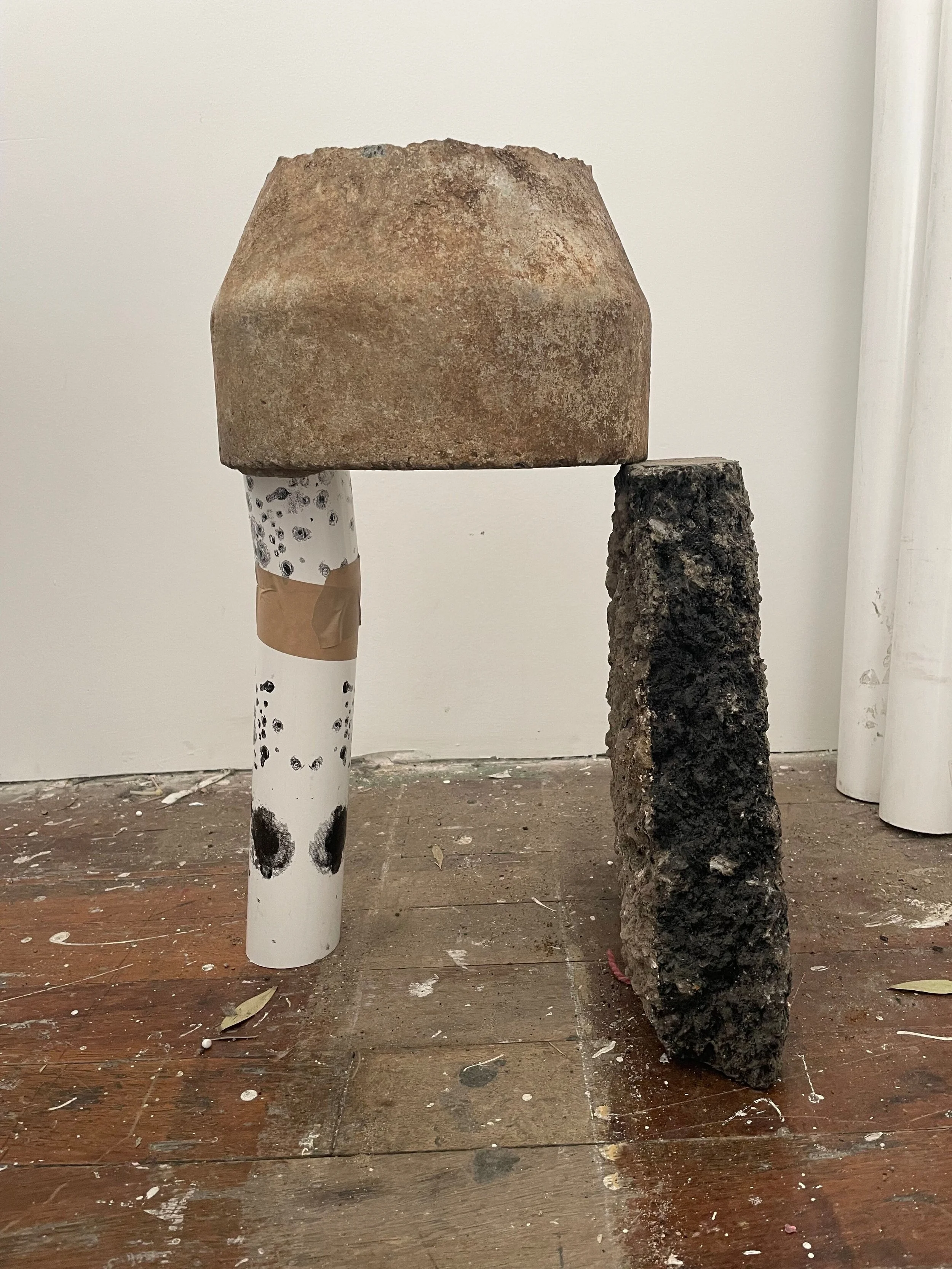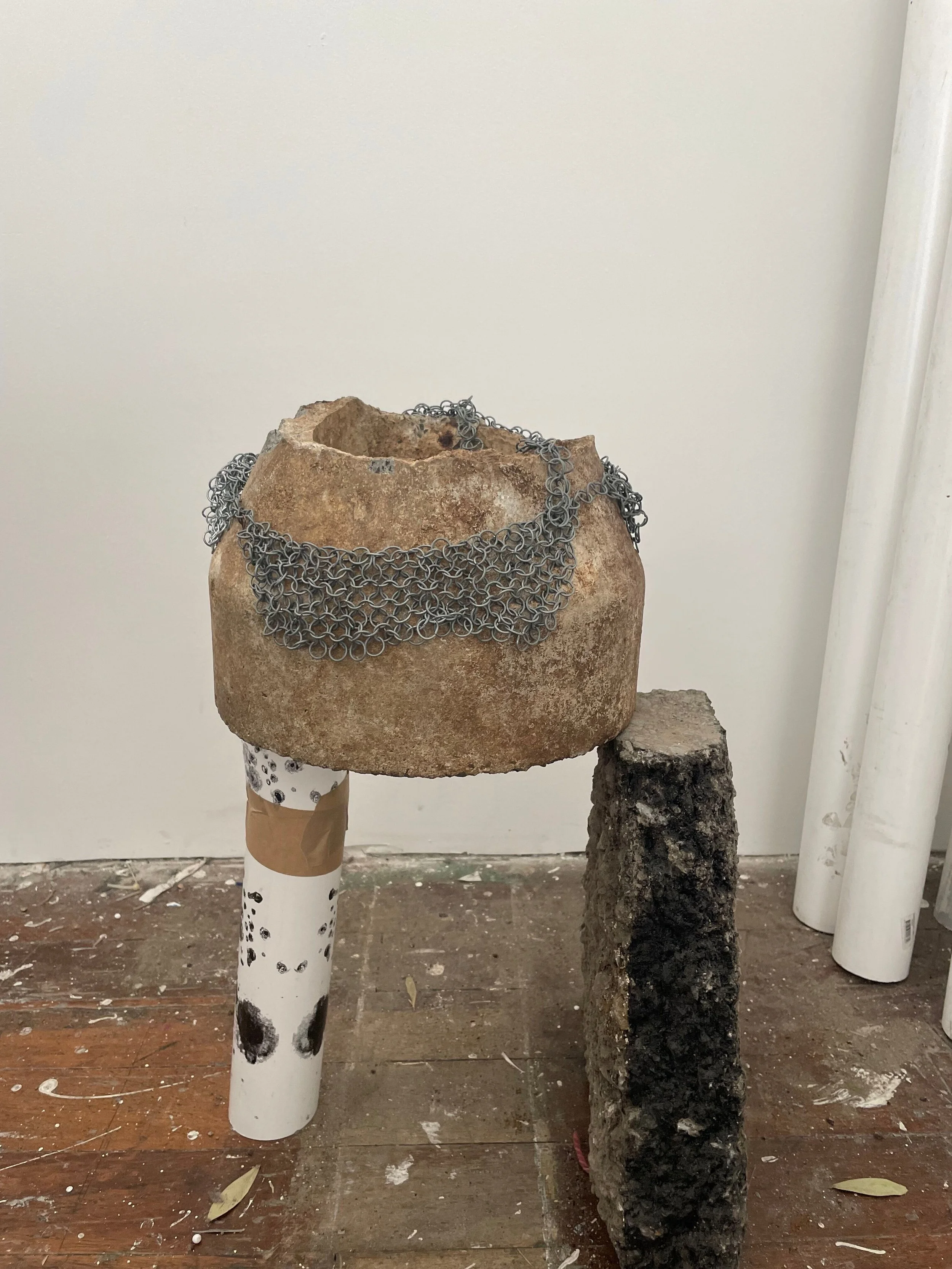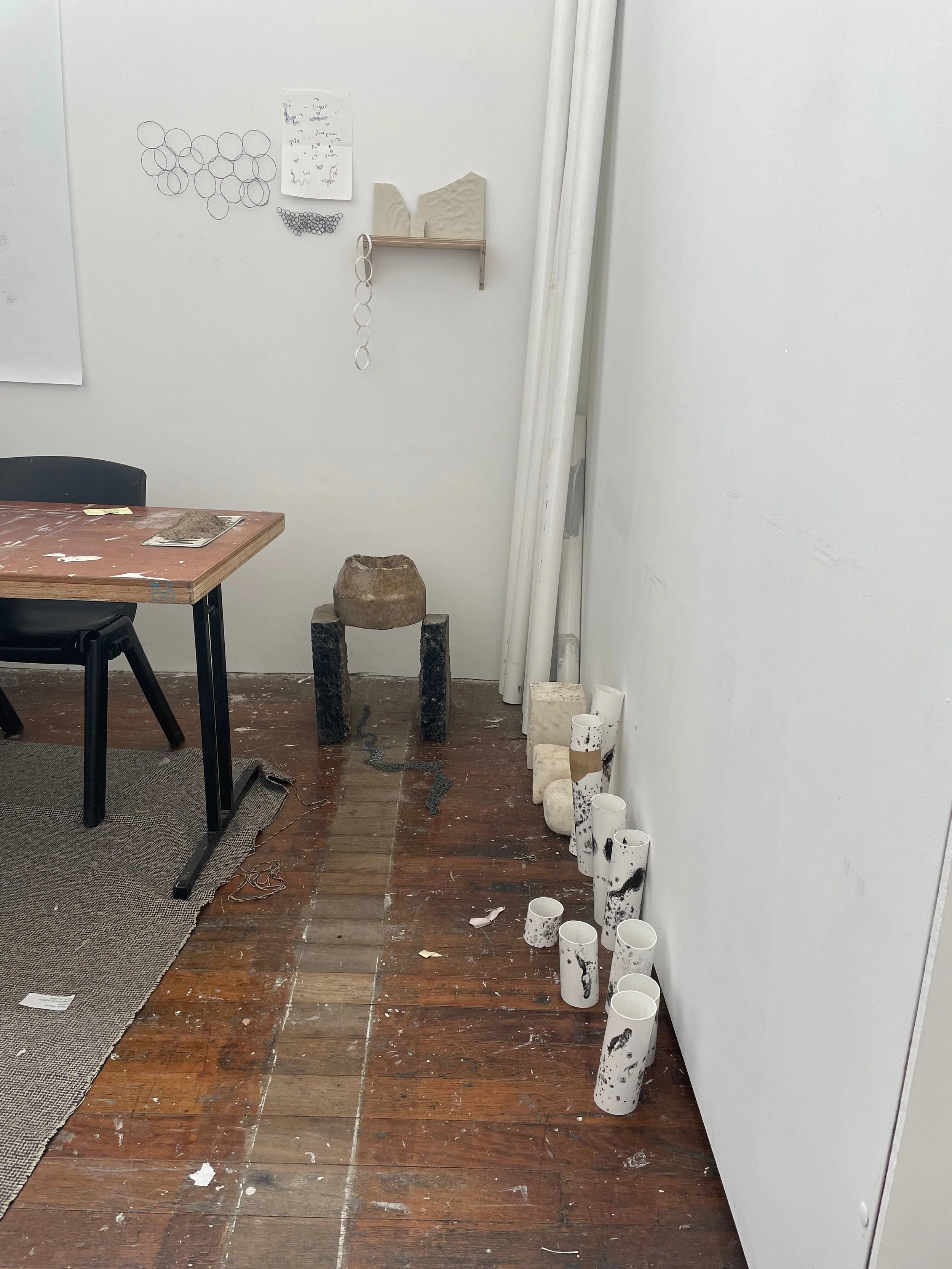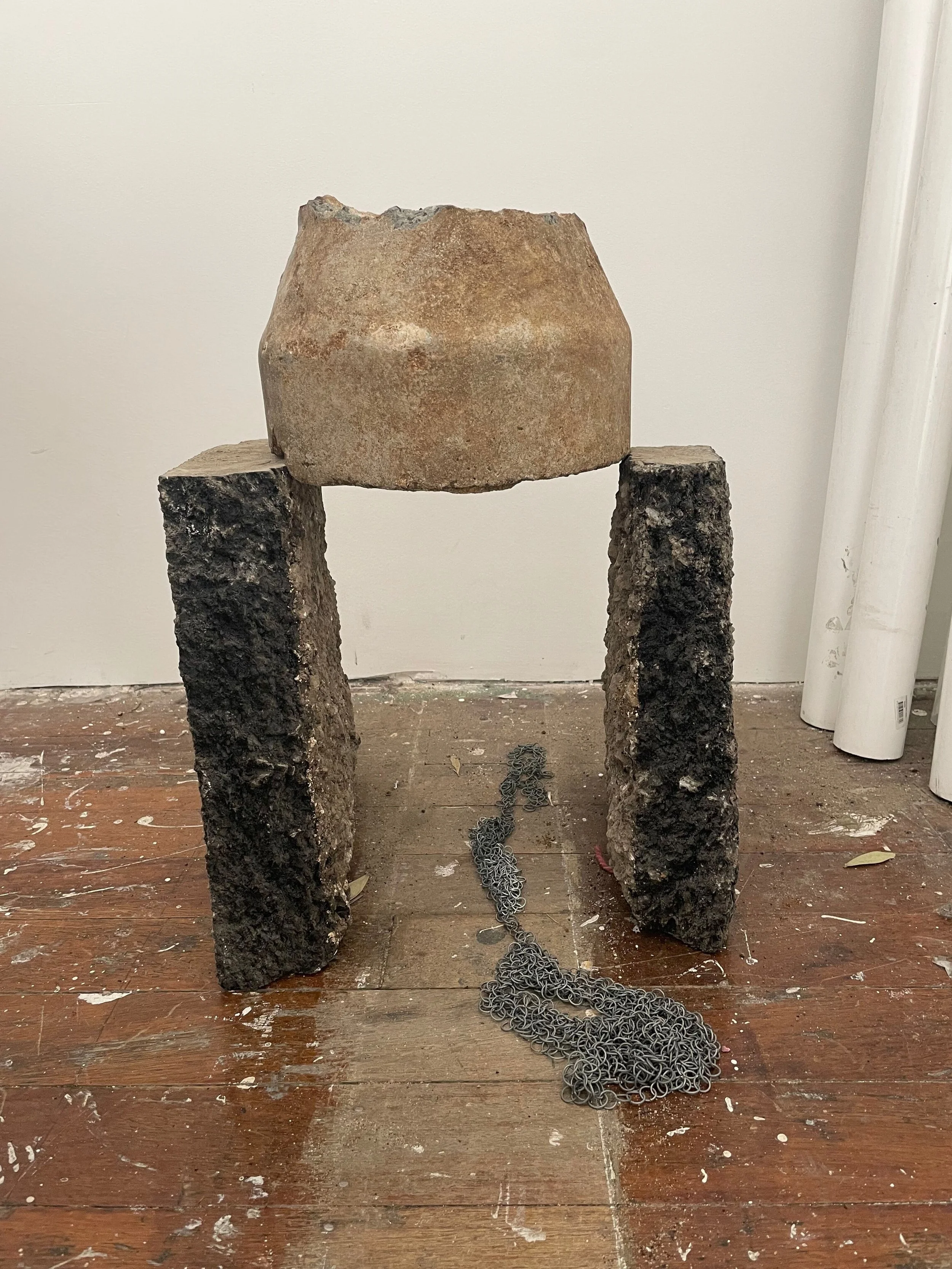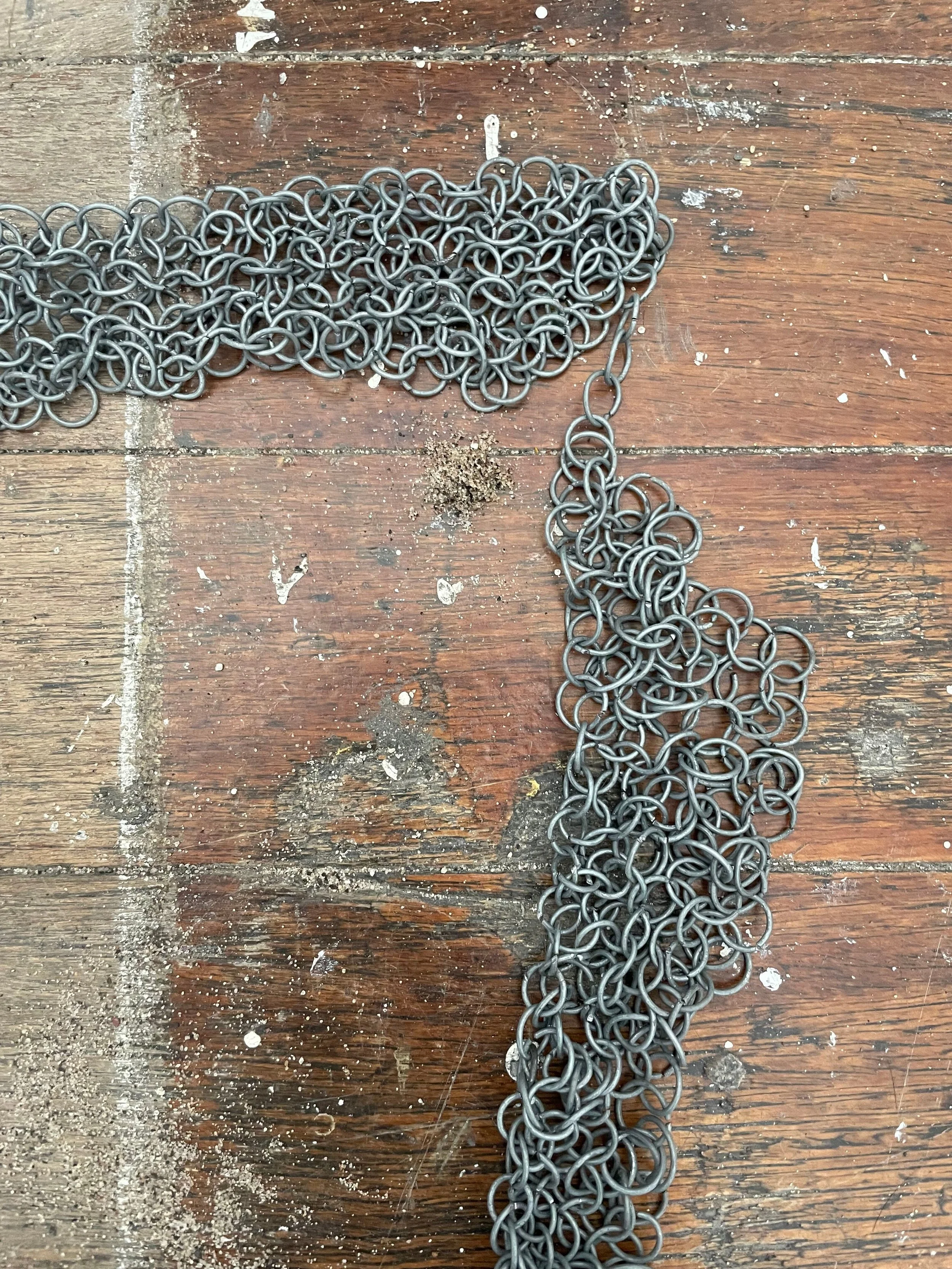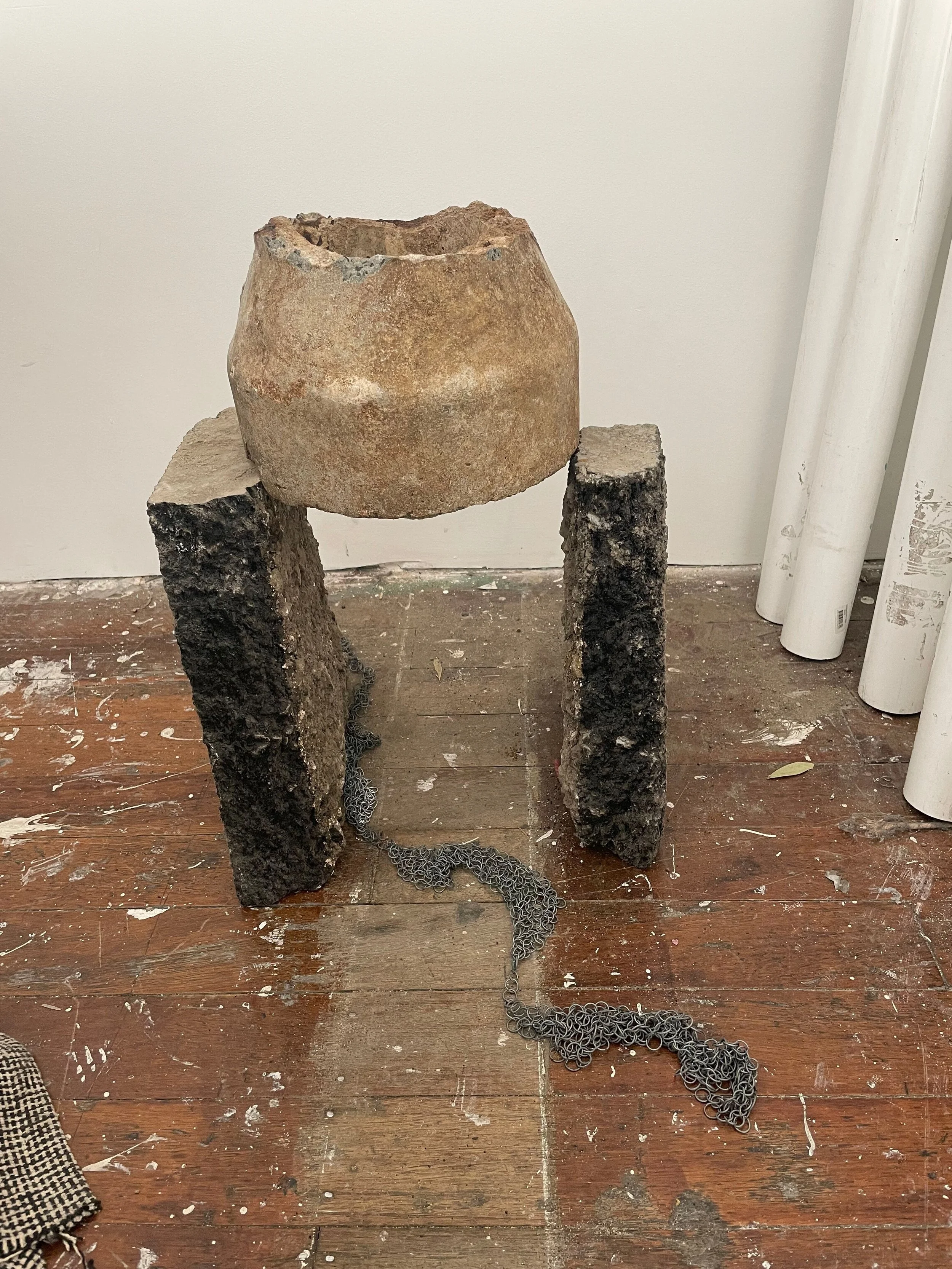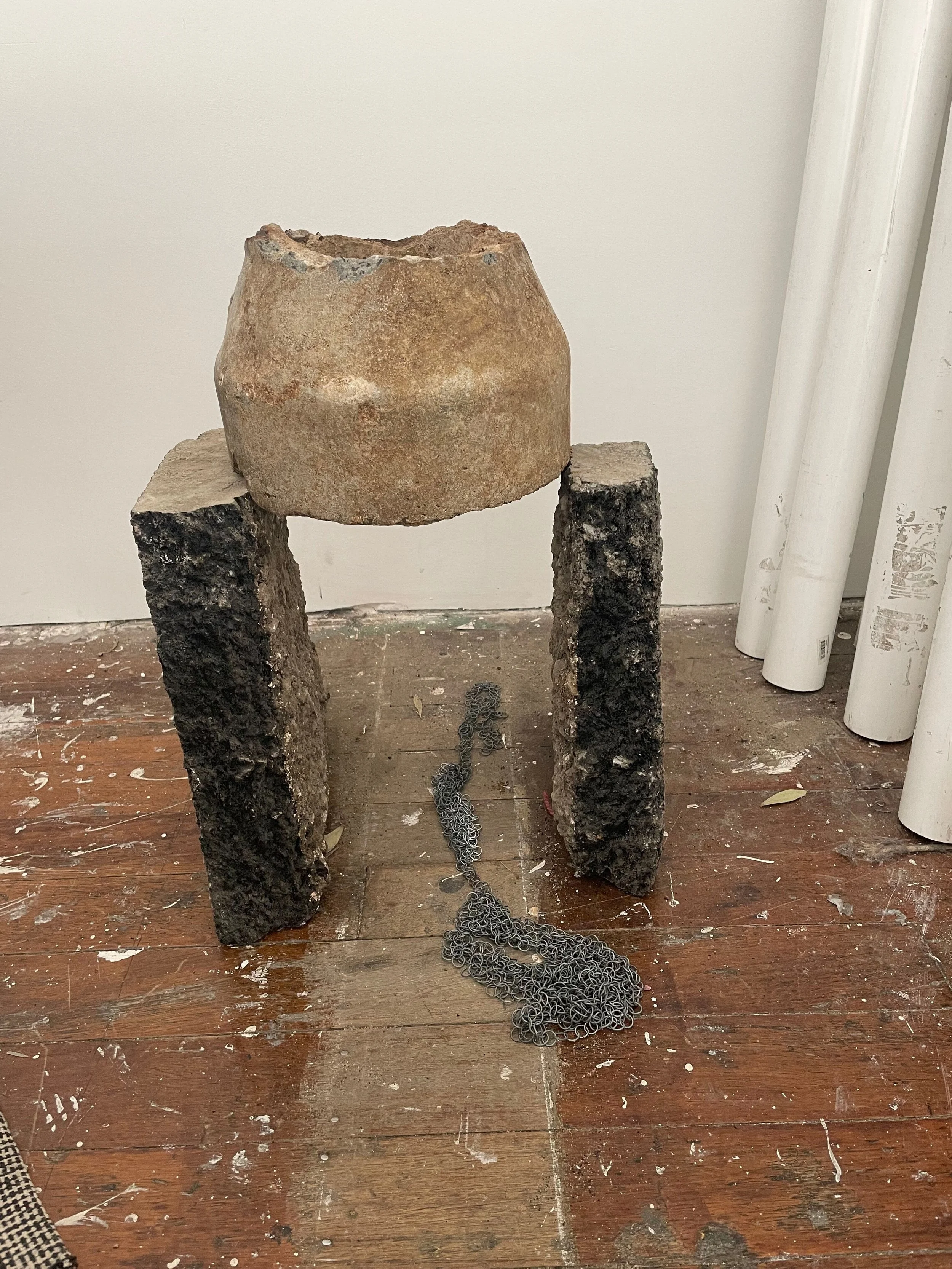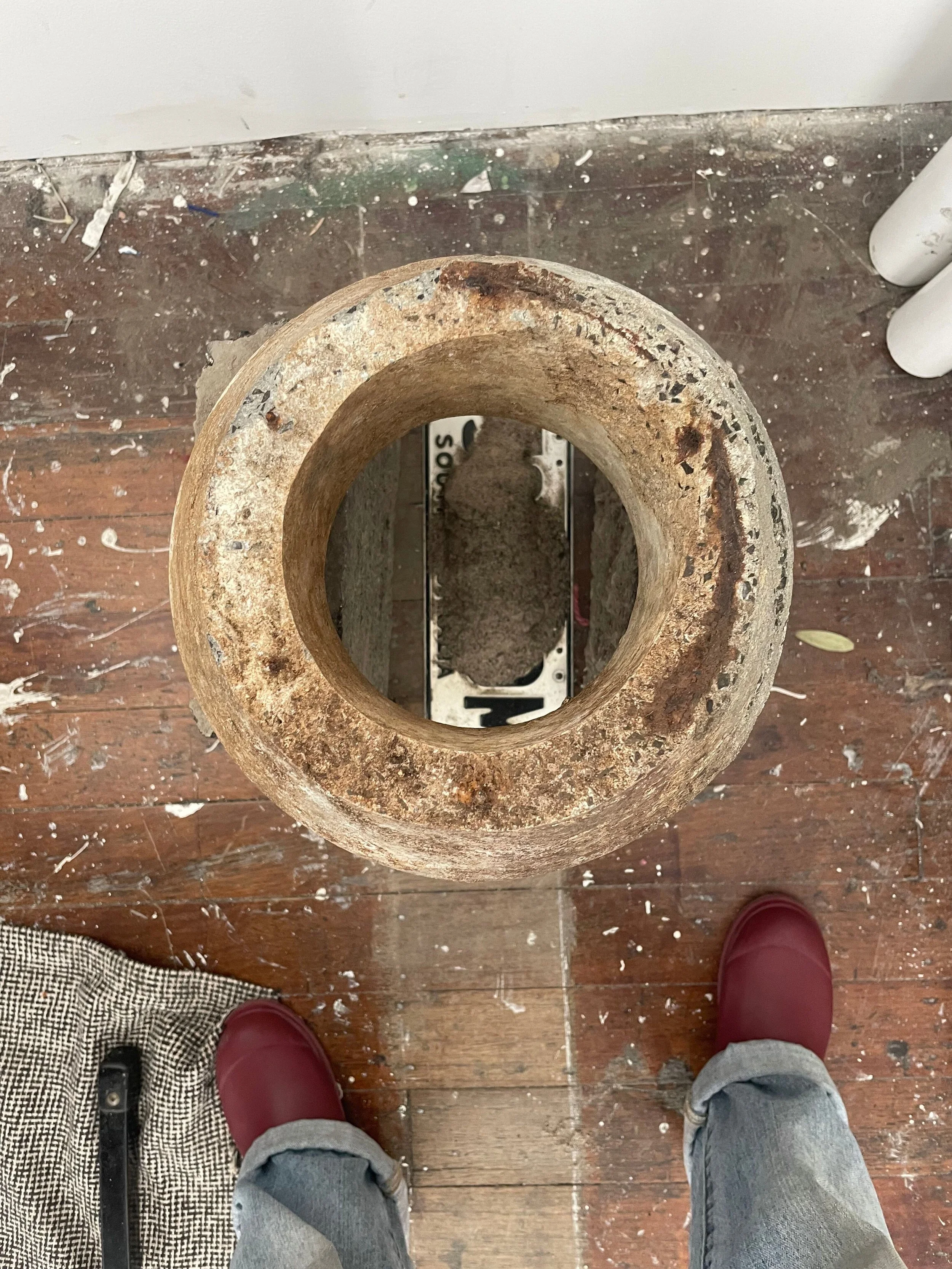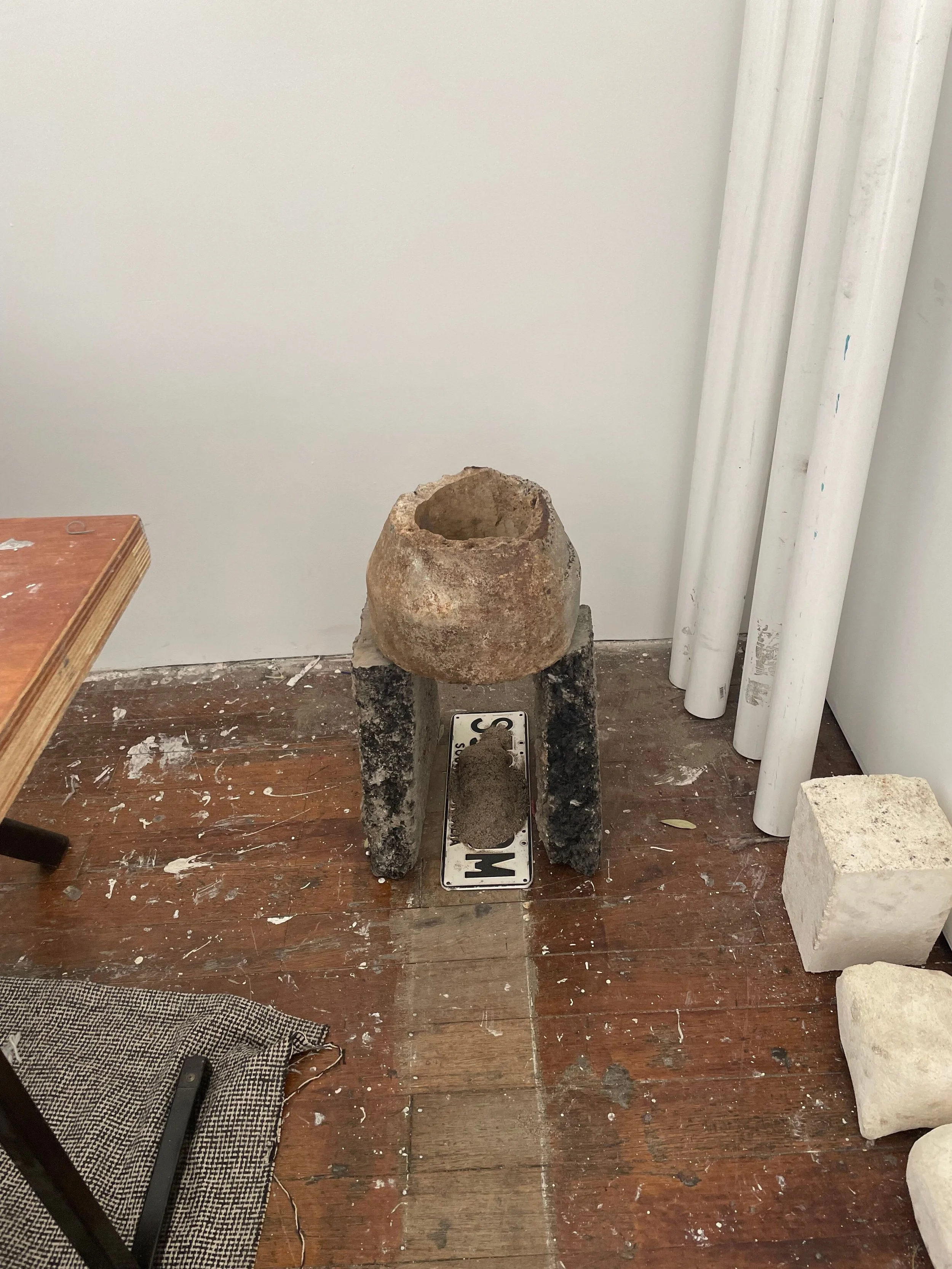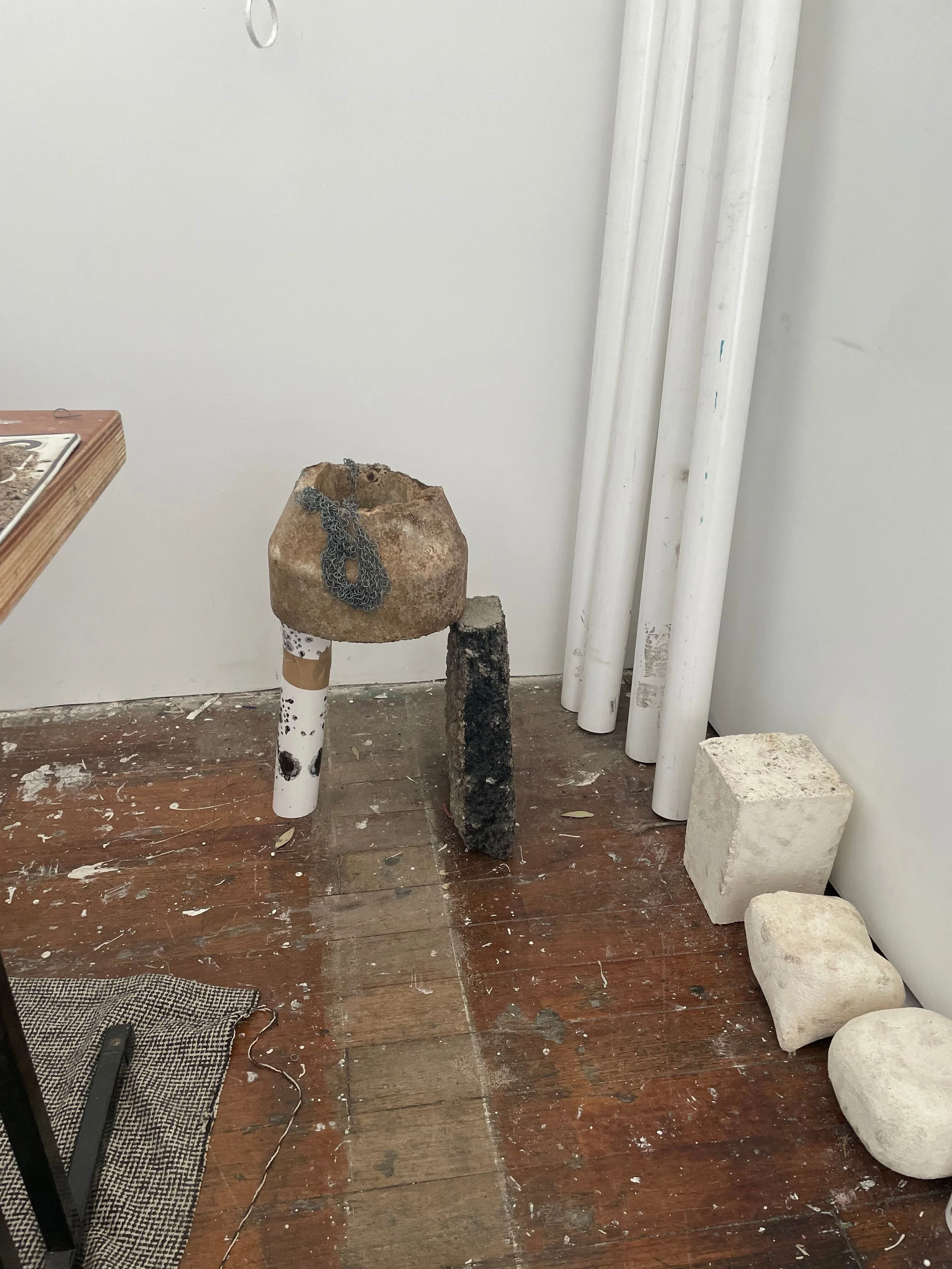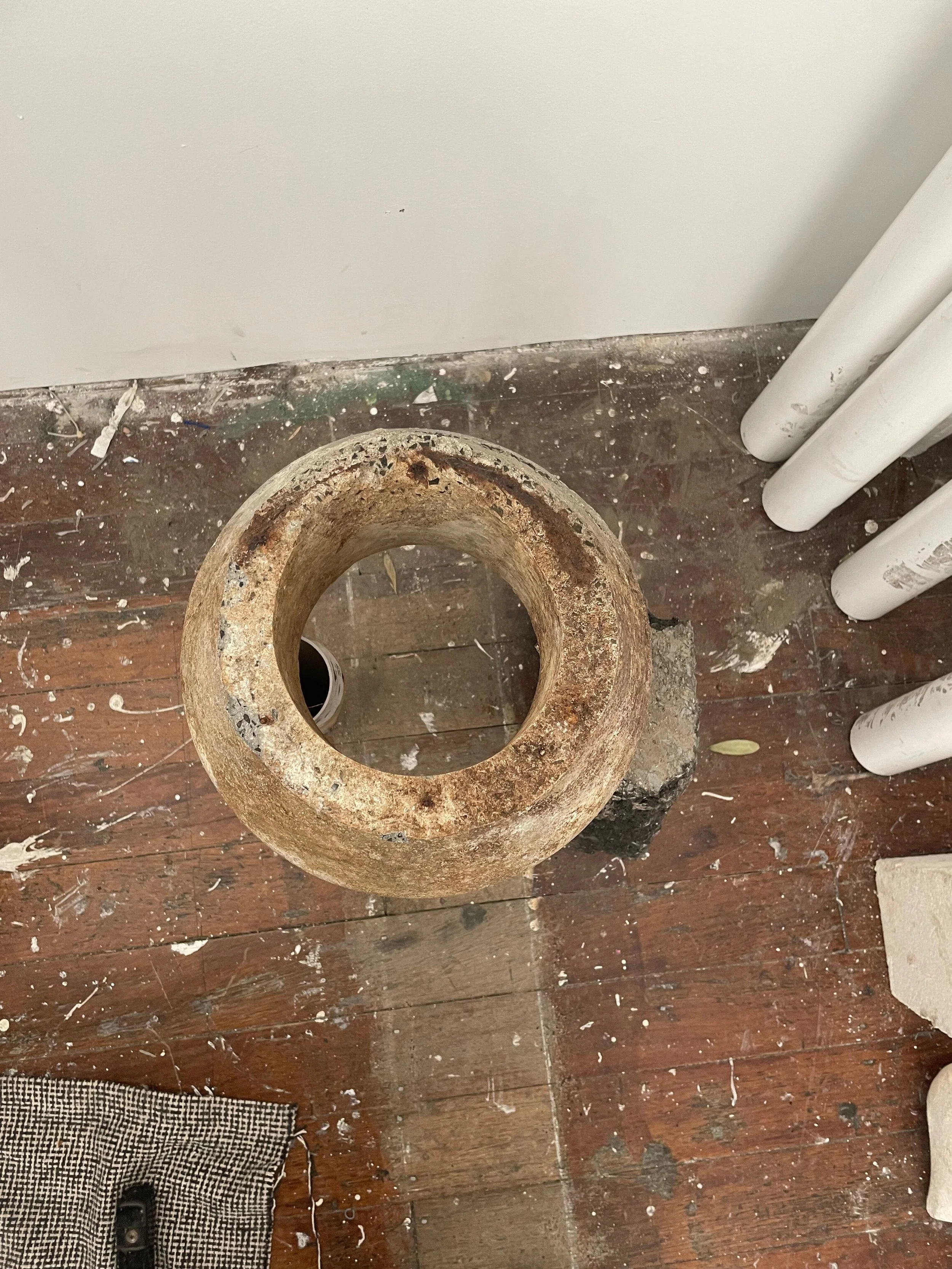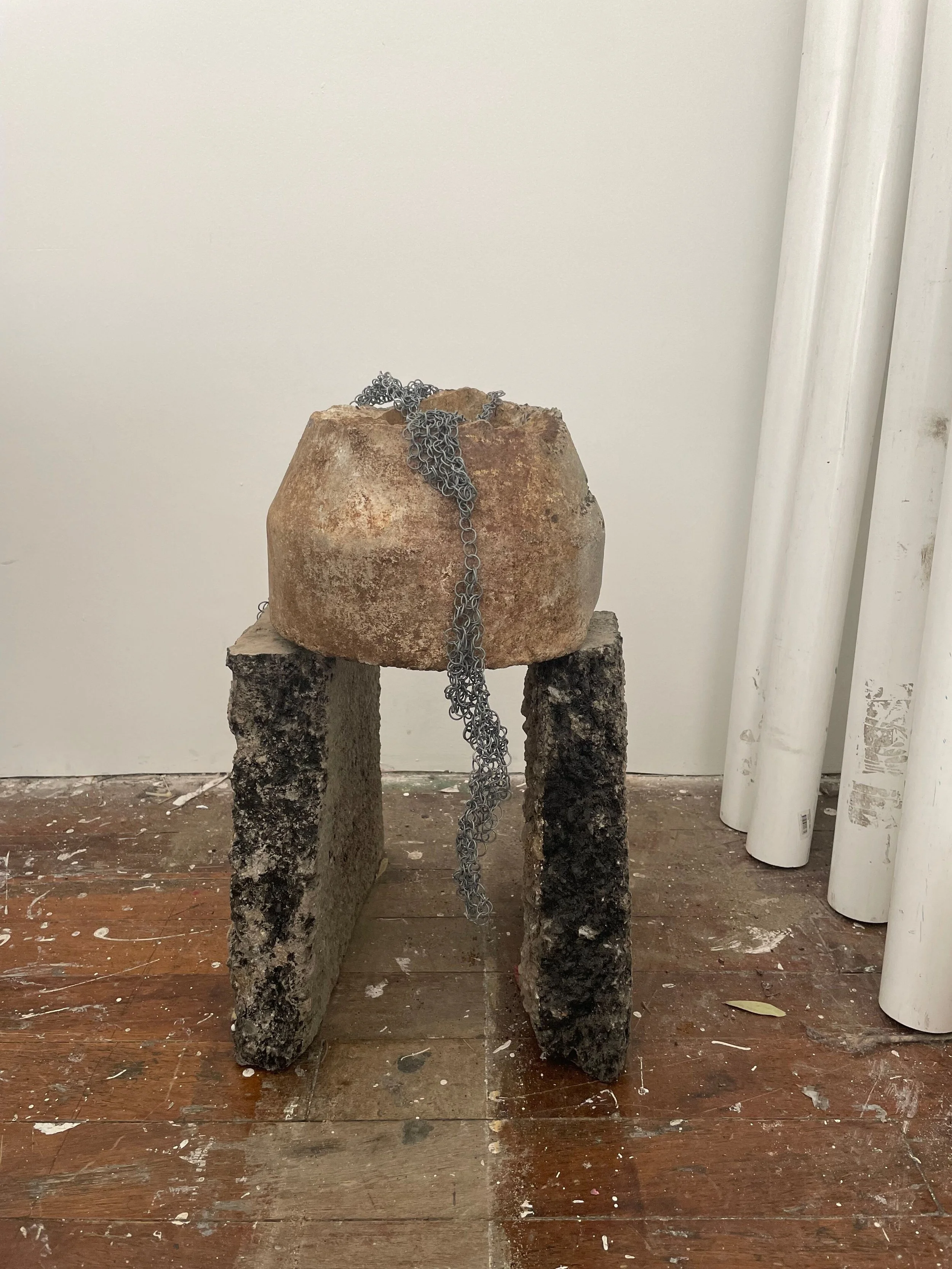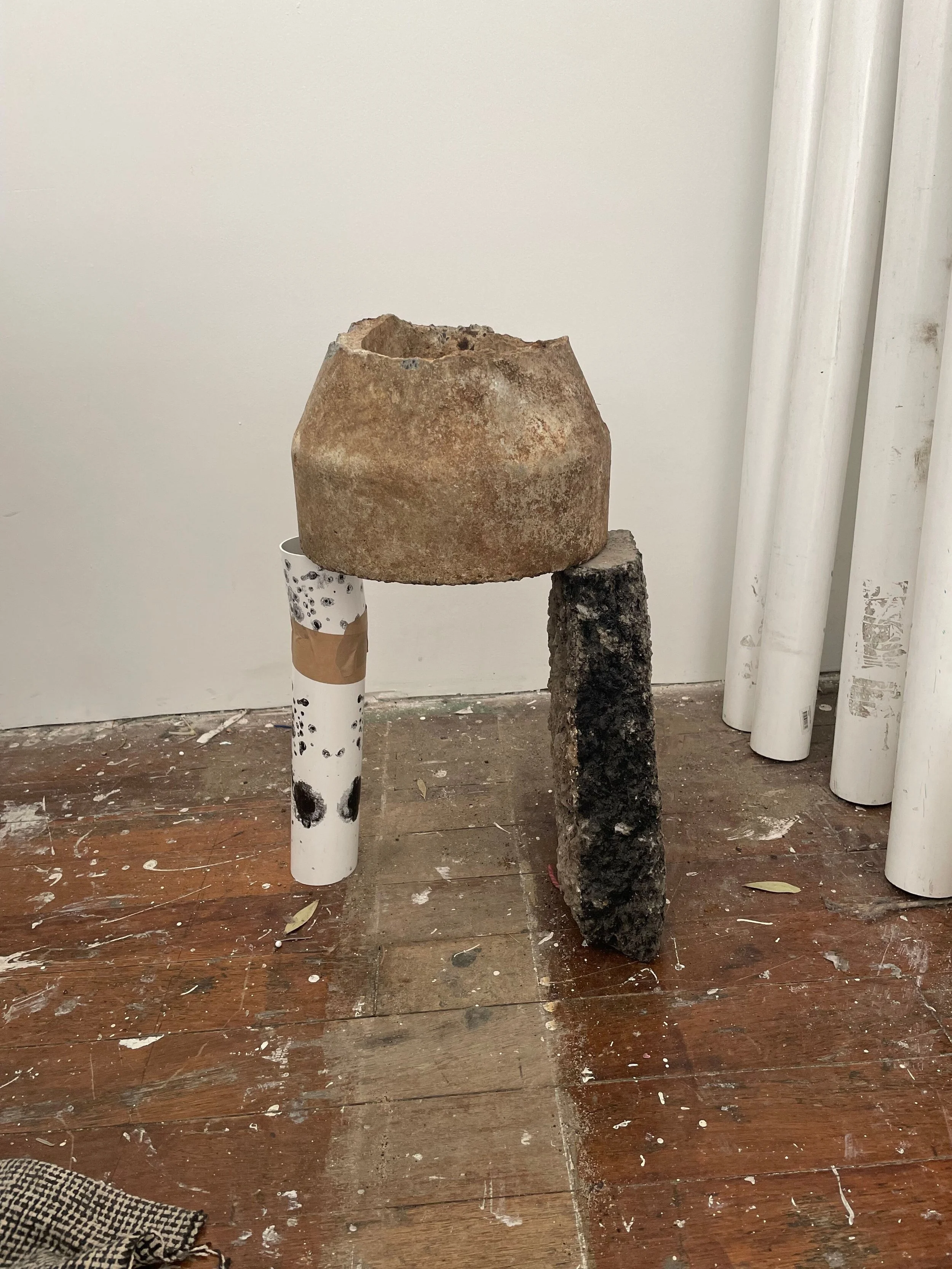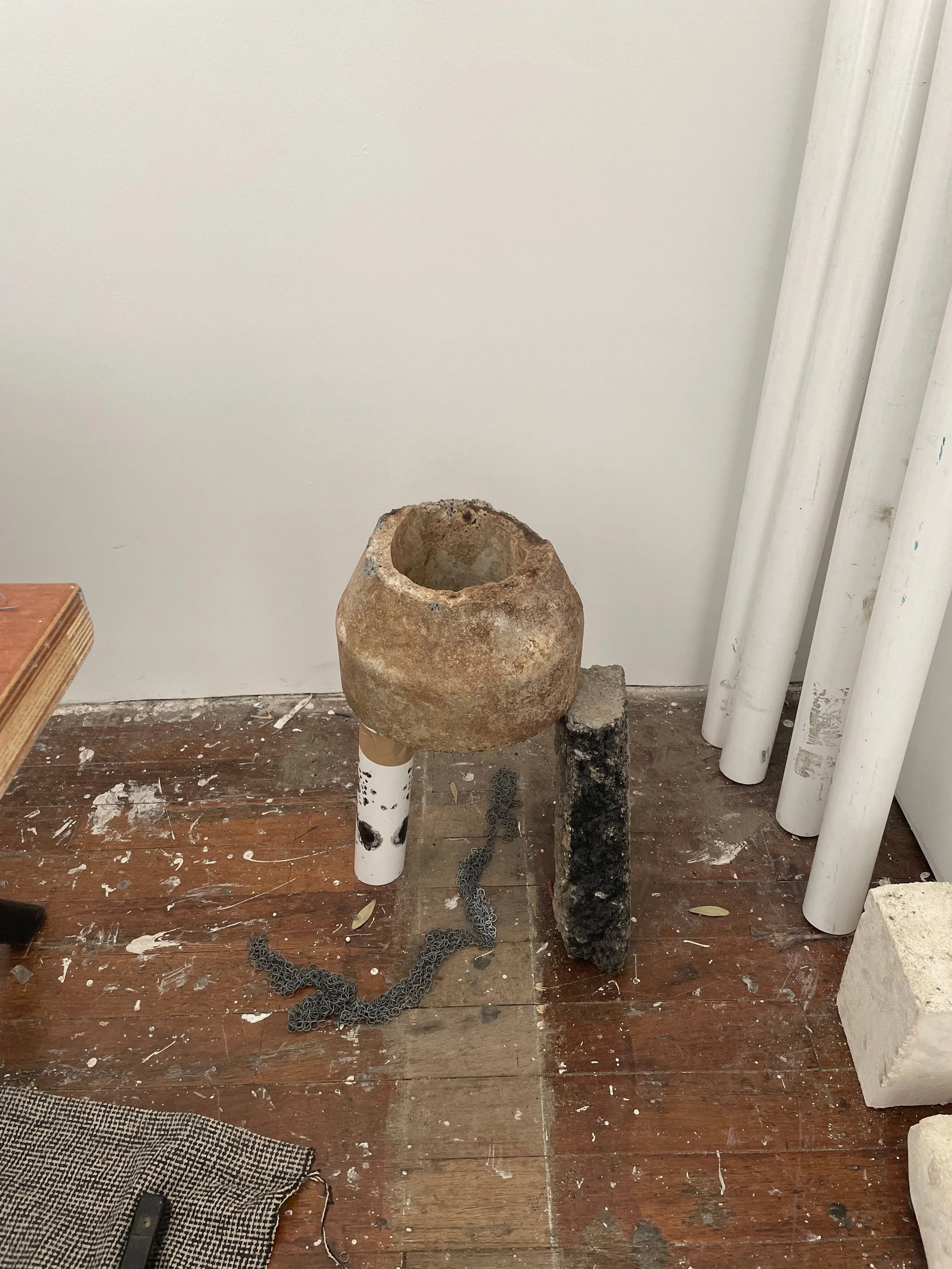speaker, concrete and chainmail trials
Following the science fiction workshop with Mia boe, I began thinking more deeply about why I was drawn to the materials I was interested in, and what they remind me of, and what other things they encourage me to aact upon or think about.I realised that this is a very tactile exploration, and a lot of it is about exploring spaces where people are not supsippoesed to be but it is a space specially designed for people.
mia boe science fiction narrative workshop, what questions can we be asking
histories of chainmail
histories of tunnels and concrete
it feels like it is a tactile explroations
ursula laguin reading
val plumwood reading
histories of chainmail, what do they remind me of?
what purposes were these materials serving before?
how science fiction has been capitalised, what if we look at how people exist without ownership of property, do these sanctions encourage or hinder curiosity
essay by fredric jameson
tactility,
Bodies, looking at how our infrastructure mirrors ourselves, and how we depend on the flow of liquids and fluids through these, and this is done through adorning or shielding vulnerable areas of these bodies. I am interested in the systems and the sounds that operate underneath the surface layer, and am looking at the undersides through depicting these ‘skins’ alongside the internal heartbeat of the cities
How can explore this relationship further? How can I further bring the body into the industrial? Subterranean connections, mapping is significant.
Looking at heartbeats through sound
72 beats and the speakers switch, play
Skipping and moving in these spaces urge to explore, need to move and slip through
Mapping, how can I utilise the chains and the sand
Modern day uses are often separate from the original use of warfare, and are sued to protect divers from sharks
In my mind there is a narrative that exists alongside chainmail, it makes me think of a medieval environment that exists as the context for a lot of children’s stories and it feels more playful than associated with danger, and through the collection of the sand there is something I am interested in about taking from a space, not really to do anything with, but the action of taking and collecting as a way of engaging with it. Most of the marks left in the drains are there through action and physical mark making, but through my field recording I have tried to capture my bodily relationship in context to the site. Not mapping body systems like nerves, but feelings that can be materialised a bit more, like percussion from out heartbeats and footsteps. When I was listening back to the recordings, I heard myself say that it felt like a grown up lollipops, because I think that there is a pleasure in entering a place you know you should be with the knowledge that it is still designed for the coexistence of people and environment. The deeper you go the more you are able to discover about the histories of the place, the concrete structures are at some points bricks and at others PVC. What purpose do these drains serve? Do they seek to simply move the water or act as a filtration system to change its form in some way.
Chainmail has a history of preindustrial warfare, but it seems to be so removed from its original context now, serving as an object which is almost inefficient in what it does, it becomes a tactile material, the cool metal reminding me of the cool walls of concrete in the tunnels.
Sand is collected as a form of this mapping, remaining wet and sludgy, as a trace of its past. I was surprised to discover the sand when I was there, since the water is generally clear, obstructed only by algae or the occasional piece of rubbish. It was flowing out of a pipe, did it come from another system? Another body of water? But it would stay stagnant until the rain came and pushed it back into the river. By dressing the sand and the concrete in the chainmail, am I saying something about its value? That it holds some sanctity or precious existence that needs to retain its form? It feels a bit futile holding something which is so capable of existing independently, but I feel this speaks to my desire to collect the sounds, photos or the sand itself from the site. My actions have no impact on the place I once was, and it will continue to change as I move, so these representations of the tunnels are not actually an accurate image of what it was. I am so drawn to the space and the materials because of their tactility, and their history in industries which have become so recontextualised in my life. I don’t interact with the spaces as an engineer would, seeing them as a site which needs to be monitored, but it a place to explore and leave a mark and look at marks which others have made, to spend time with the materials and the interaction of water eroding concrete. I work in HSE, and spend a lot of time looking at policies and documents which outline safety procedures when interacting with sites like these, and engaging with it on one level demonstrates the futility of trying to reduce something as unpredictable as water to a corporate documentation. I think it makes me also think of the strength of a circle, and how the circles exist as reinforcement, as containers, as wheels. Their intention shifts as a cylinder is placed vertically or horizontally. I think I see the energy this exploration has produced as curious, and it has evoked the same feeling in me spending my holidays looking at the same patch of dirt in my backyard trying to make it into a garden. The environment persisting and me watching it. It feels arduous and calm, and I have time to think of the creatures which could live here. The jobs they would have, the homes they would return to, the high pitch of their laughs. In many ways entering this space with my own friends has this affect. We too giggle and crawl, and touch the walls as I imagine these creatures would. Every 72 beats the speakers switch, from echoes of singing and laughing to rhythmic beating of feet.

